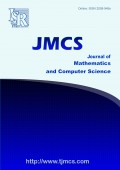

Cedric M. A. Ayala Bravo - Researcher at DPR Engenharia, Campinas, Brazil. Victor Ayala - Universidad de Tarapaca
The finite element method FEM is an important tool used in various areas of science, where partial differential equations need to be discretized. The problem's domain is approximated by means of a geometric element partition, polyhedrons or polygons, with well defined properties. Then, a standard or reference element is associated with each distinct geometric figure present in the partition. All the operations to be made in the deformed elements are loaded instead of this in the reference element by means of an affine transformation. Thus, for example, instead of defining a numerical integration rule for each deformed element, one defines a single integration rule in the reference element, and the calculation is performed employing the affine transformation. In the case of integration of the equations, using the Jacobian of the transformation, too. In this paper we make a rigorous analysis of the formal mathematical aspects of mapping between the finite geometric elements of zero, one, two, and three dimensions, commonly employed in the finite element theory. We show that this kind of mapping preserves all the geometric properties present between the reference element and the deformed element, alike the same number of vertices, edges, faces, and its dimension.
Cedric M. A. Ayala Bravo, Victor Ayala, Mathematical analysis of the geometric mapping in the finite element method, Journal of Mathematics and Computer Science, 16 (2016), no. 2, 273-281
Bravo Cedric M. A. Ayala, Ayala Victor, Mathematical analysis of the geometric mapping in the finite element method. J Math Comput SCI-JM. (2016); 16(2):273-281
Bravo, Cedric M. A. Ayala, Ayala, Victor. "Mathematical analysis of the geometric mapping in the finite element method." Journal of Mathematics and Computer Science, 16, no. 2 (2016): 273-281